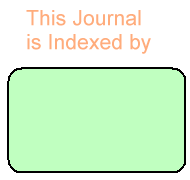Luciana ,1 ![]() ,
Retnosari Andrajati1,
Alfina Rianti2,
Amer Hayat Khan3
,
Retnosari Andrajati1,
Alfina Rianti2,
Amer Hayat Khan3
For correspondence:-
Received: 9 May 2014 Accepted: 10 March 2015 Published: 26 April 2015
Citation: , L, Andrajati R, Rianti A, Khan A. Rational antimicrobial use in an intensive care unit in Jakarta, Indonesia: A hospital-based cross-sectional study. Trop J Pharm Res 2015; 14(4):707-714 doi: 10.4314/tjpr.v14i4.21
© 2015 The authors.
This is an Open Access article that uses a funding model which does not charge readers or their institutions for access and distributed under the terms of the Creative Commons Attribution License (http://creativecommons.org/licenses/by/4.0) and the Budapest Open Access Initiative (http://www.budapestopenaccessinitiative.org/read), which permit unrestricted use, distribution, and reproduction in any medium, provided the original work is properly credited..
Purpose: To analyze the rationality of antimicrobial usage and factors influencing it over the period of January to December 2010 in Fatmawati General Hospital, Jakarta, Indonesia.
Methods: Present study was conducted in the intensive care unit of Fatmawati General Hospital, Jakarta, Indonesia. Gyssens method was used to assess the rationality of antimicrobial use. Data for this retrospective, cross-sectional study were drawn from patients’ medical record files. Multivariate analysis with ordinal logistic regression was used to determine the dominant factors affecting the appropriateness of antimicrobial use.
Results: Data for 410 patients from the intensive care unit (ICU) was collected. There were 912 antimicrobial regimens prescribed for these patients. Based on Gyssens method, 805 antimicrobial regimens were empirical and 107 definitive. Of the empirical regimens, 596 (74.03 %) were inappropriate, while of the definitive regimens, 84 (78.51 %) were inappropriate. Site of infection, comorbid conditions and economic status of patients were the main factors that influenced the appropriateness of antimicrobial treatment choice.
Conclusion: A higher degree of irrational use of antimicrobial agents occurs in the ICU of the hospital studied, this can lead to increase in the burden of disease.
Archives


News Updates